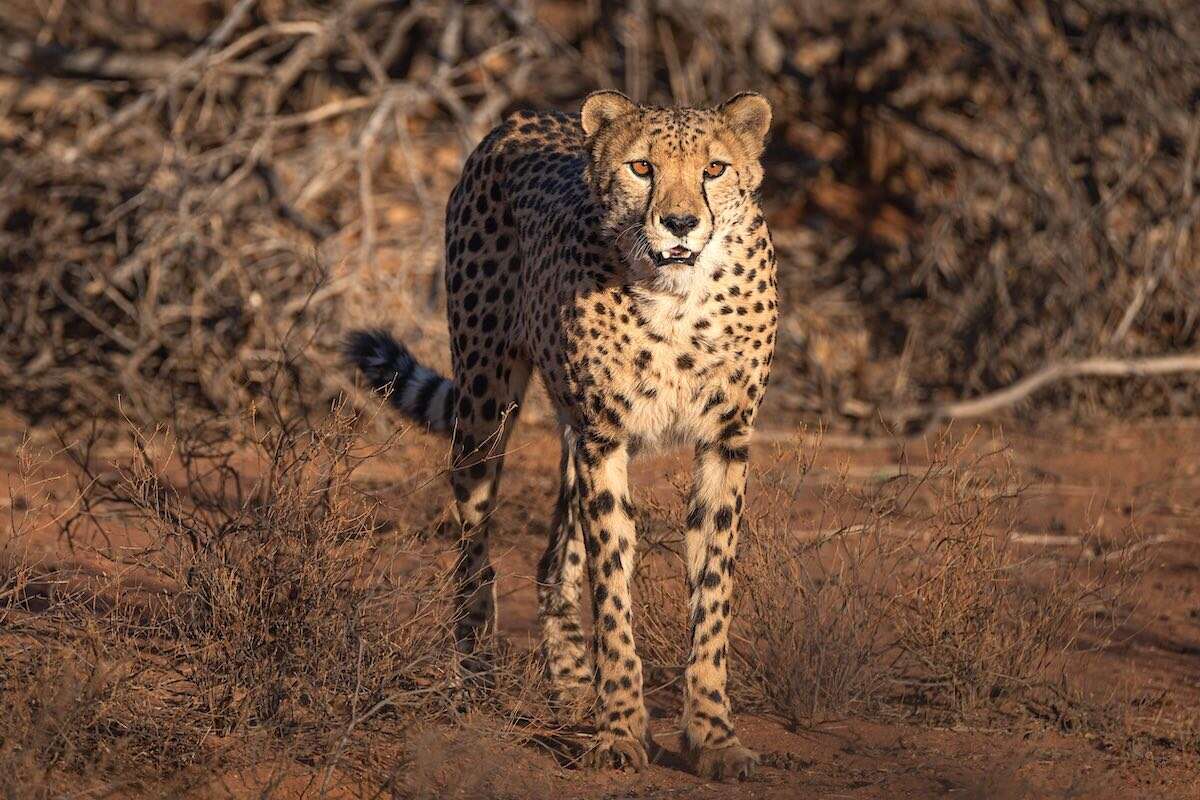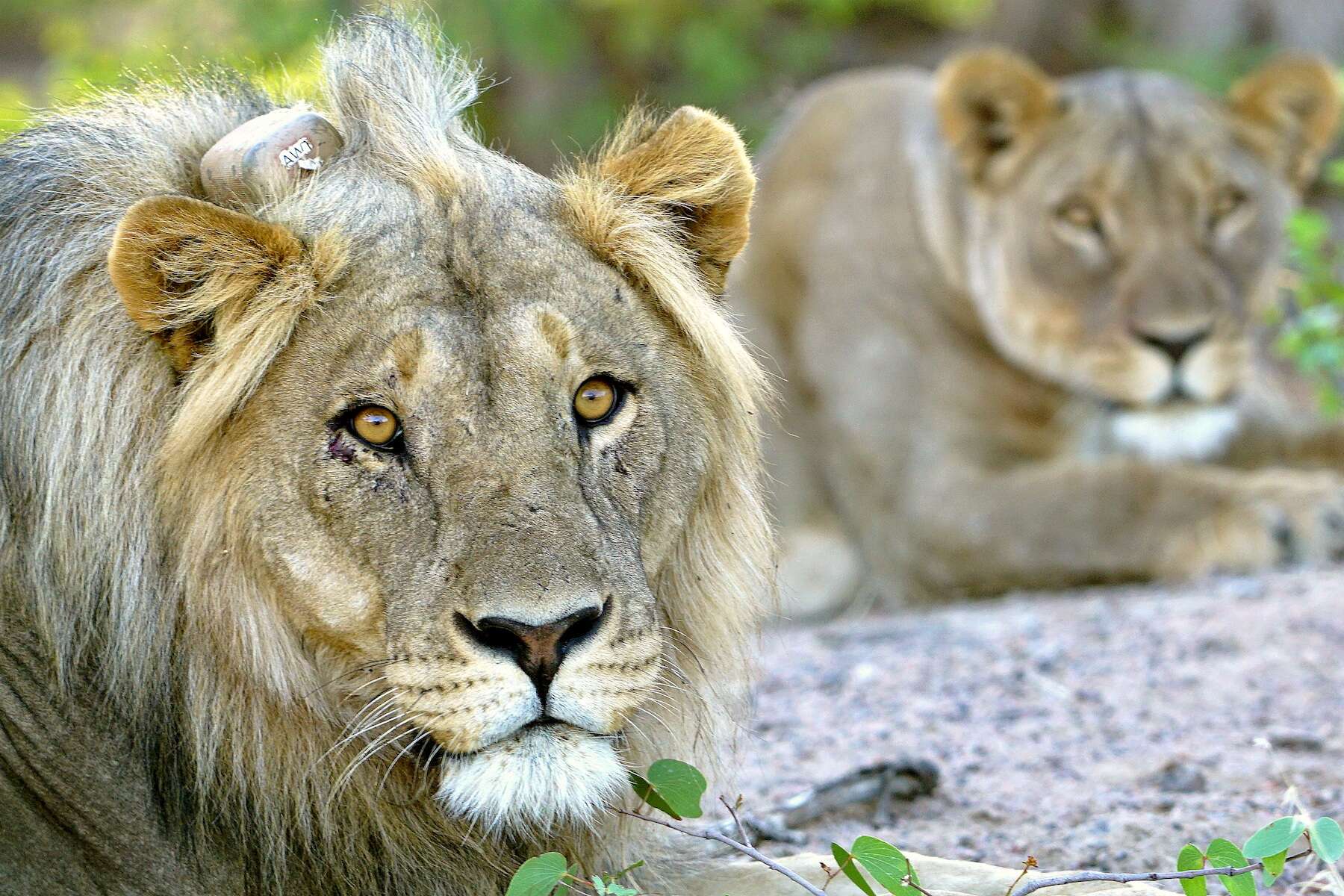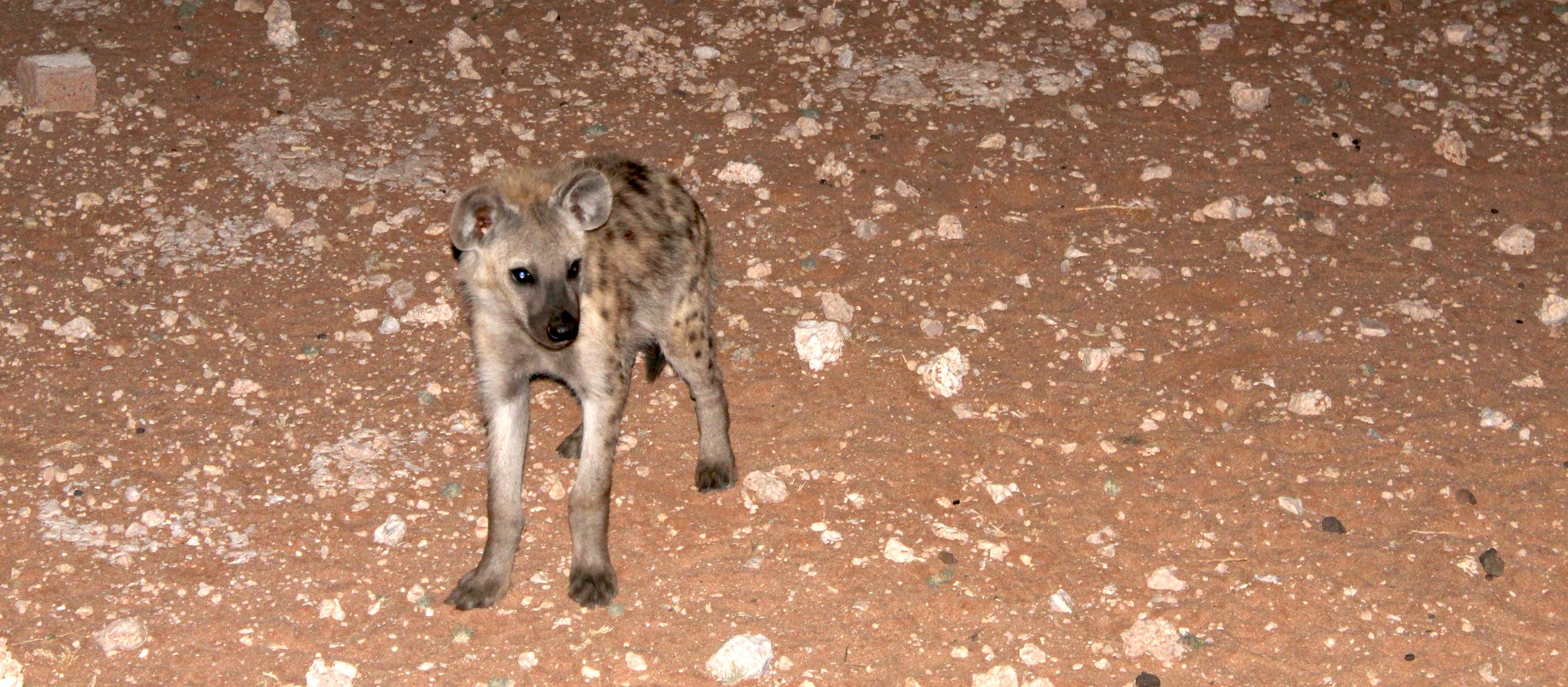
Easing the Enmity
Helping livestock farmers coexist with spotted hyaenas
By Karl Sebastian Fester
N/a´an ku sê
8th August 2020
Spotted hyaenas are among the most misunderstood and unloved carnivores in the world. These extremely intelligent, opportunistic and curious animals are often killed on farms in response to livestock losses or supposed conflict, but also because they are perceived as vermin
. As a result, the species is declining throughout Africa.
Namibia experienced a dramatic population drop of nearly 65% in 20 years, particularly on farmlands outside protected areas (2,000-3,000 animals in 1998 to about 615-715 in 2019). Unless effective and properly implemented conflict mitigation methods are used, hyaena populations outside protected areas will continue to decline in Namibia due to conflict with farmers. If nation-wide policies and perceptions are not changed soon, we could see the Namibian spotted hyaena population decline to near unrecoverable numbers. Our research over the past four years in southern Namibia along the Namib-Naukluft National Park border has therefore focused on understanding spotted hyaena behaviour and ecology to develop ways to reduce livestock losses and thus promote coexistence between farmers and hyaenas.
Many freehold and communal farmers in Namibia use fences and/or holding pens (kraals) for livestock protection and overnight containment, respectively. But many of these fences and barriers are inadequate for keeping carnivores out and thus do not reduce the likelihood of losing livestock. To address this problem we redesigned the standard fences used on farms to create more effective barriers between livestock and spotted hyaenas by preventing hyaenas from digging under the fences to gain access to livestock.
Because investing in a long-term solution is more cost-effective than continually fixing the same problem, we aimed to develop a lower-cost and therefore attractive means of keeping hyaenas away from livestock on both freehold and communal farms. We repurposed old fencing materials removed from a de-stocked sheep farm, which significantly reduced the cost of our new fence design by simply using what is already available on most farms.
We first modified a basic kraal by adding mesh wire fencing (also known as ‘jackal-proof’ fencing) to increase the fence height to 1.5 metres above ground (a standard fence is 1.2 m) and extended it half a metre below ground (standard fencing extends only a few centimetres below ground). The below-ground fencing was reinforced with rocks to prevent hyaenas from digging under the fence to access the kraal. To prevent access through the gate, we tied camel thorn branches to the base of the gate. No covering was placed over the kraal to keep the design as basic and original as possible.
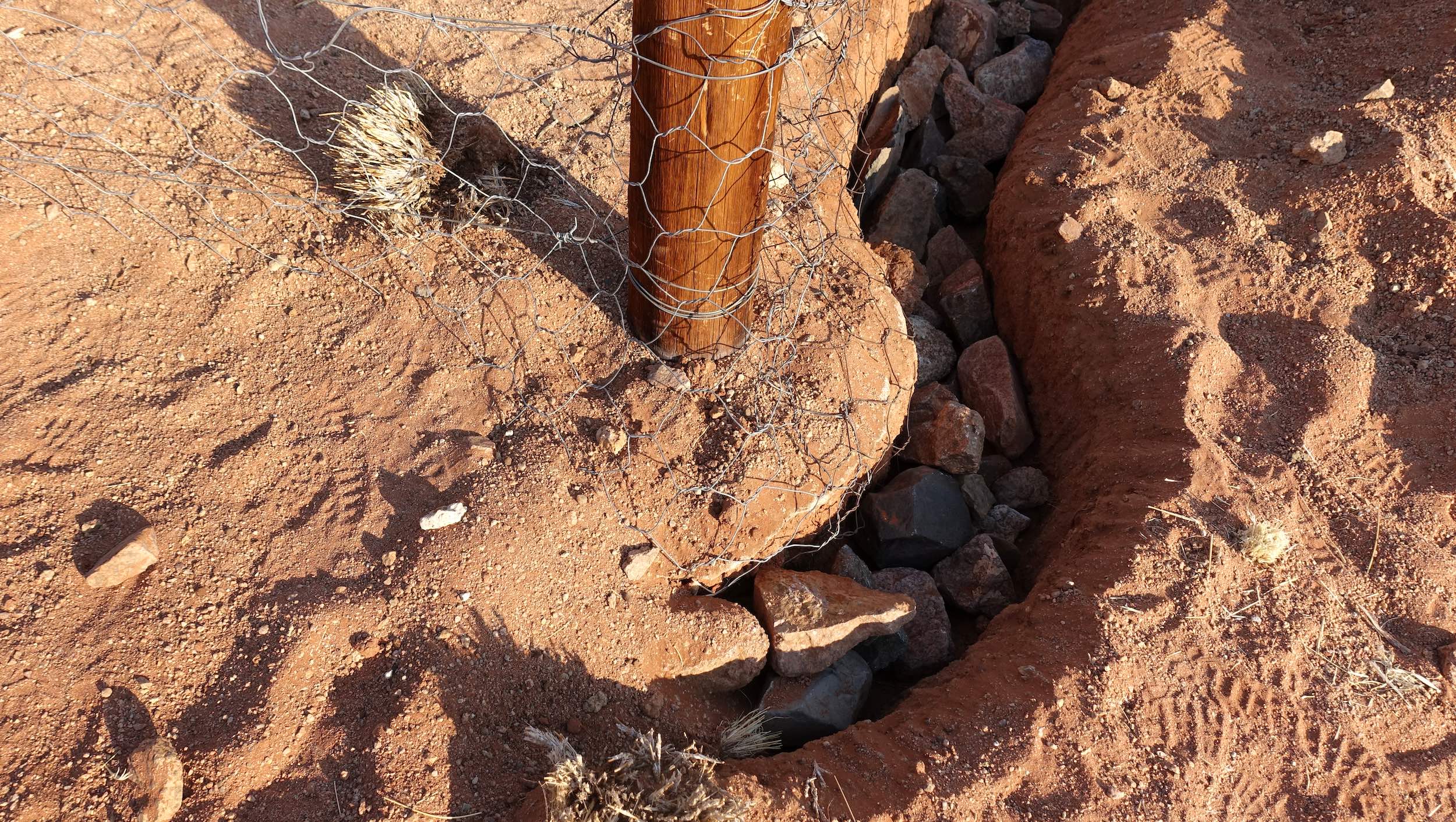
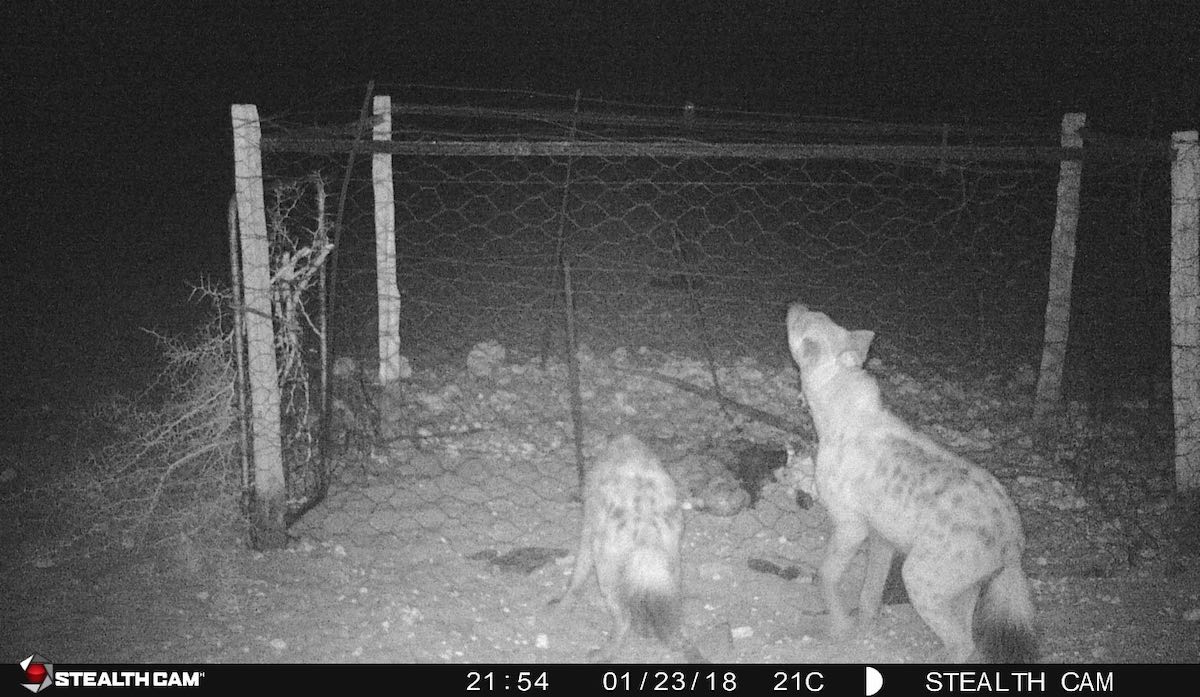
We placed a gemsbok carcass in the kraal as bait and monitored it with motion-sensitive cameras and by direct observations during the night for three and a half months. A wild clan of four spotted hyaenas visited the kraal frequently during this test period and attempted to gain access. Their best attempts (one lasting nearly 8.5 hours!) failed, proving that our design has few or no weaknesses.
The next step was to design a fence suitable for the big sheep grazing camps commonly used on freehold farms in southern Namibia. These sheep are not kept in kraals at night, so the camps are usually fenced to keep jackals out, but this is not sufficient for spotted hyaenas. Because high fences can prevent wild antelope (e.g. gemsbok) from moving through farms, we designed a semi-permanent hyaena-proof fence that could be removed when the grazing camp was not being used. Our ‘droppable’ hyaena-proof fence can be easily lowered and erected within a few minutes. As with the kraal fence design, we buried 0.5 m of the mesh wire and fortified it with rocks, making it almost impossible for hyaenas, black-backed jackals and other digging animals to get through the fence.
Past studies revealed that farm gates are the weakest point of an enclosure, which hyaenas and other carnivores exploit to enter the grazing camps and kraals. Using thorn branches to fortify all of the camp gates could result in the over-exploitation of thorn trees in desert environments, therefore we had to design a different kraal gate. Our new camp gate is similar to the fence that is buried and fortified, but is easily lowered and erected (rather than swinging open like a customary gate) when entering or leaving the camp.
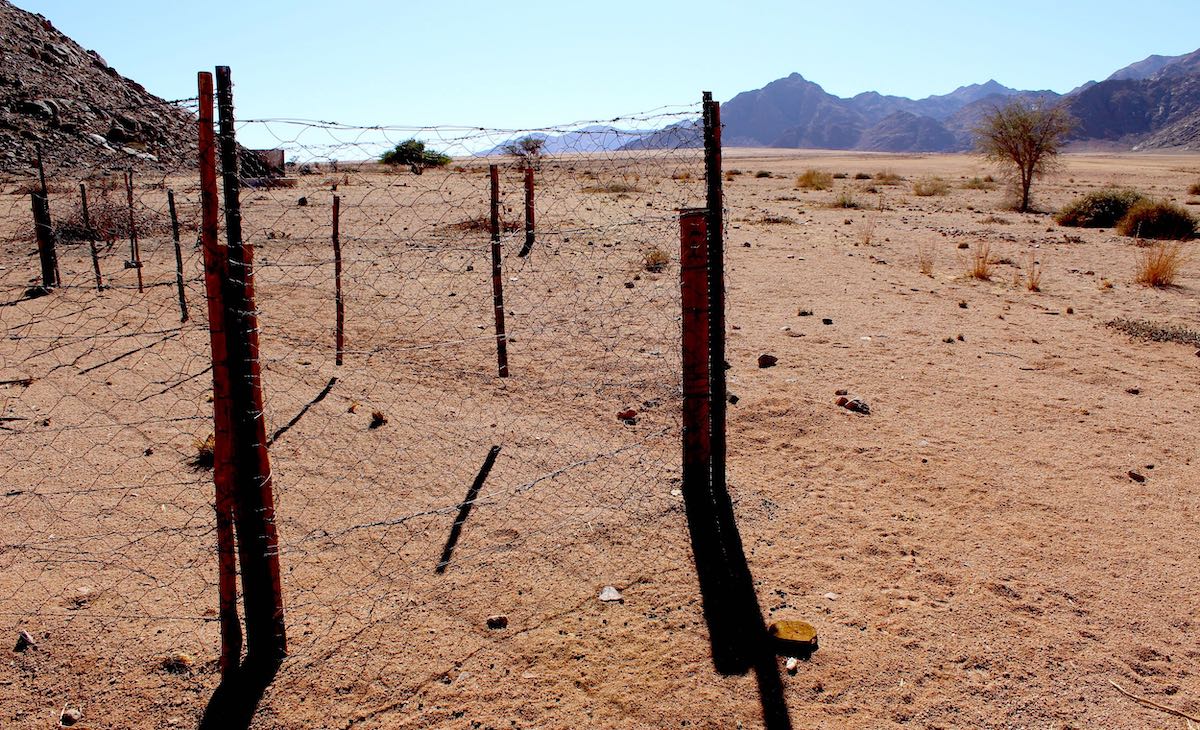
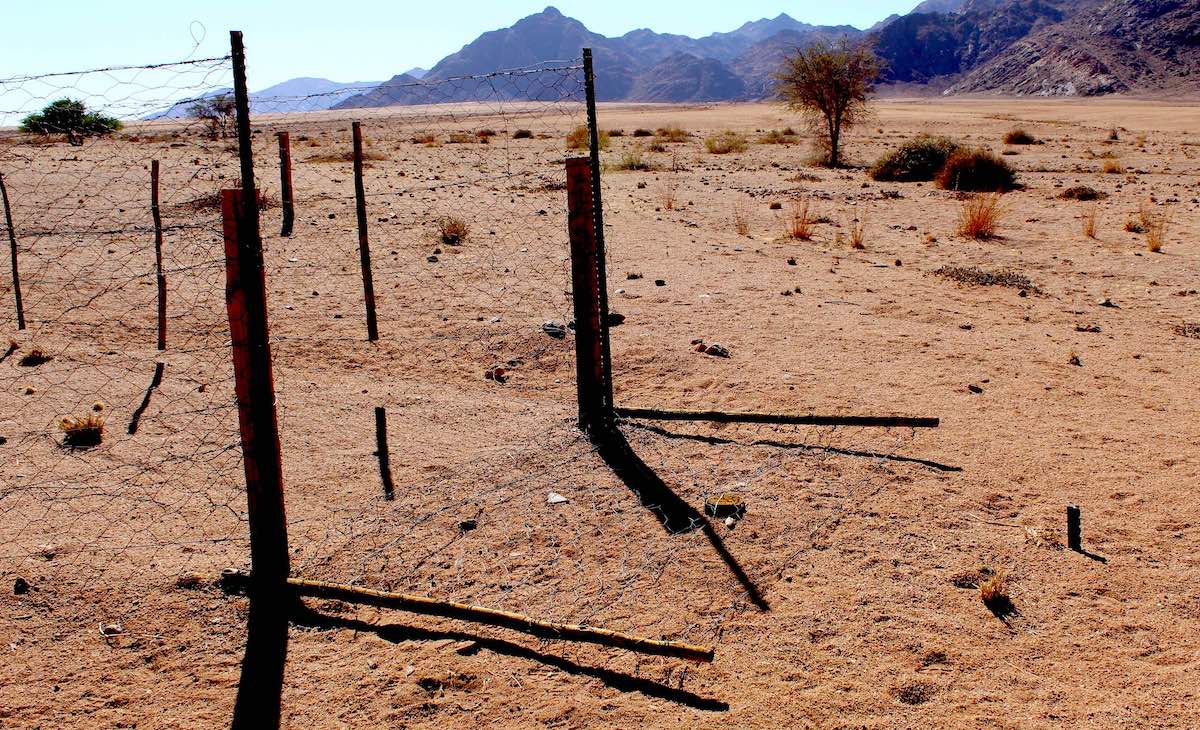
These modifications to both fences and gates can easily be made to any standard livestock fence or kraal already in use on a farm. Our semi-permanent fencing can also be erected in areas of known hyaena activity such as around hills and mountains to keep livestock out of high-risk areas, and then lowered once livestock are moved to graze elsewhere, thus re-establishing free movement of wildlife and reducing the likelihood of wild animals damaging the fence.
Our simple designs provide an attractive option for protecting livestock in almost all farming systems, and we have offered free fencing materials to the farming communities in the south who would like to try our system. For communal farmers who herd their livestock into kraals at night, an effective kraal fence can keep their livestock safe whilst they sleep and carnivores are most active. For freehold sheep and cattle farmers who allow their livestock to graze freely day and night in large camps, our semi-permanent fencing system would fortify their grazing camps, particularly in areas of known hyaena activity. This fencing system can greatly reduce livestock predation and thus help farmers coexist with, rather than eliminate, spotted hyaenas on their land.

For more information about
N/a´an ku sê
visit:
naankuse.com
For more information about
N/a´an ku sê
visit:
naankuse.com
For articles on similar topics, please click one of the following options:

